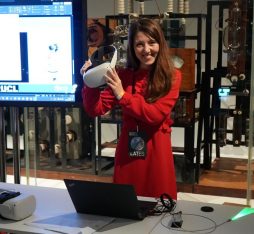• This technique allows for the delocalisation of data and applications to make blockchain technology much lighter, paving the way for faster, more powerful, and more secure transactions.
• This method can also be used to process data from Internet of Things devices that are integrated into a blockchain.
Scandals like the resounding collapse of FTX in the autumn of 2022 or the bankruptcy of the Mt.Gox bitcoin exchange in February 2014 have sullied the image of blockchains for the general public, while adding to the perception that the technology is limited to the field of finance. Although finance still accounts for a majority of blockchain applications, blockchains can also be used to trace food products, manage fleets of drones, protect intellectual property and diplomas, and trade surplus renewable energy (the Brooklyn Microgrid project in New York). In fact, all transfers of data and instructions between connected entities (devices, services, vehicles, industrial machines) can be managed by blockchains. At least, that is the case in theory, however, the problem of the scale-up of this decentralized infrastructure, which is automatically regulated by computers and cryptography has yet to be resolved.
The challenge of processing power
The blocks, which are used to record data on transactions validated by blockchain systems, are limited in size, and the rate at which they are created can be painfully slow (one block every ten minutes on Bitcoin, every 14 seconds on Ethereum, and every 30 seconds on Tezos). As a natural consequence of decentralization, every blockchain node stores the history of all transactions on the chain in a register that can amount to several dozen gigabytes, way beyond the storage capacity of certain IoT devices. At the same time, methods to validate blocks, most notably schemes, demand large amounts of computational power that may not be available on common IoT devices.
It makes no sense to endlessly store drone positions from a small application on thousands of machines
Then there is the question of the financial cost of validating transactions, which for applications that generate enormous amounts of data, can be prohibitive. “It makes no sense to endlessly store drone positions from a small application on thousands of machines,” adds Jérôme Lacan, head of the Department of Complex Systems Engineering at ISAE-SupAéro in Toulouse. Along with his colleague Caroline Chanel and doctoral researcher Thomas Lavaur, Lacan has recently published an article in the journal Sensors on rollups, a solution that aims to overcome these restrictions.
One can transaction can confirm thousands of others
Systems of this kind are currently very much in vogue in the world of blockchains. “The idea is to delocalise some of the data and applications onto rollups, which can be housed on local networks, enterprise systems or elsewhere, and to organise exchanges between them and the blockchain,” explains Jérôme Lacan. “Transactions take place on the rollup and user accounts, which are blocked on the blockchain, are regularly updated.”
Rollups make use a of a cryptographic tool known as a , which transforms incoming data incoming into summaries (hashes) that weigh only a few bytes. “In a single short transaction, this Merkle tree makes it possible to commit and confirm not one, but thousands of transactions with it, something that was not possible before,“ writes Daniel Augot, a research director at INRIA (the French National Institute for Research in Digital Science and Technology) in a recent article for the Institut Polytechnique de Paris. The technique also liberates an enormous amount of bandwidth on the blockchain.
Added privacy with ZK rollups
For the IoT devices, the researchers at the Institut Supérieur de l’Aéronautique et de l’Espace (SupAéro) have adopted an approach that makes use of what are known as ZK (zero knowledge) rollups. “Using a known programme, someone will create a proof that everything has worked correctly, and everyone will be able to check that without having to execute the transaction on the blockchain”, explains Thomas Lavaur. This can be done without comprising data security. In all transparency, the rollup members see the input data, but only one member generates the proof. Better still, only the proof needs to be supplied to the blockchain, without revealing data on the transactions which remains on the rollup, thus ensuring greater privacy.
“It would be relatively easy to apply this mechanism to Uber-type marketplaces,” points out Jérôme Lacan. “Drivers could post transactions indicating their availability and locations, while passengers could indicate where they want to go, and all of this could be managed with smart contracts whose code is freely available, with clear rules for attributing rides, and predetermined prices, but without any centralized agency.” As it stands, companies take charge of rollups and the generation of proofs. However, it is now possible to conceive of systems in which local groups of users could conduct these operations themselves.
One of the mechanisms that enables blockchain networks to reach the consensus required to confirm transactions and add new blocks to the chain.
A Merkle tree, or hash tree, is a mathematical concept invented in 1979 by cryptographer Ralph Merkle. It is a data structure model that contains a summary of information from what is usually a very large volume of data.












